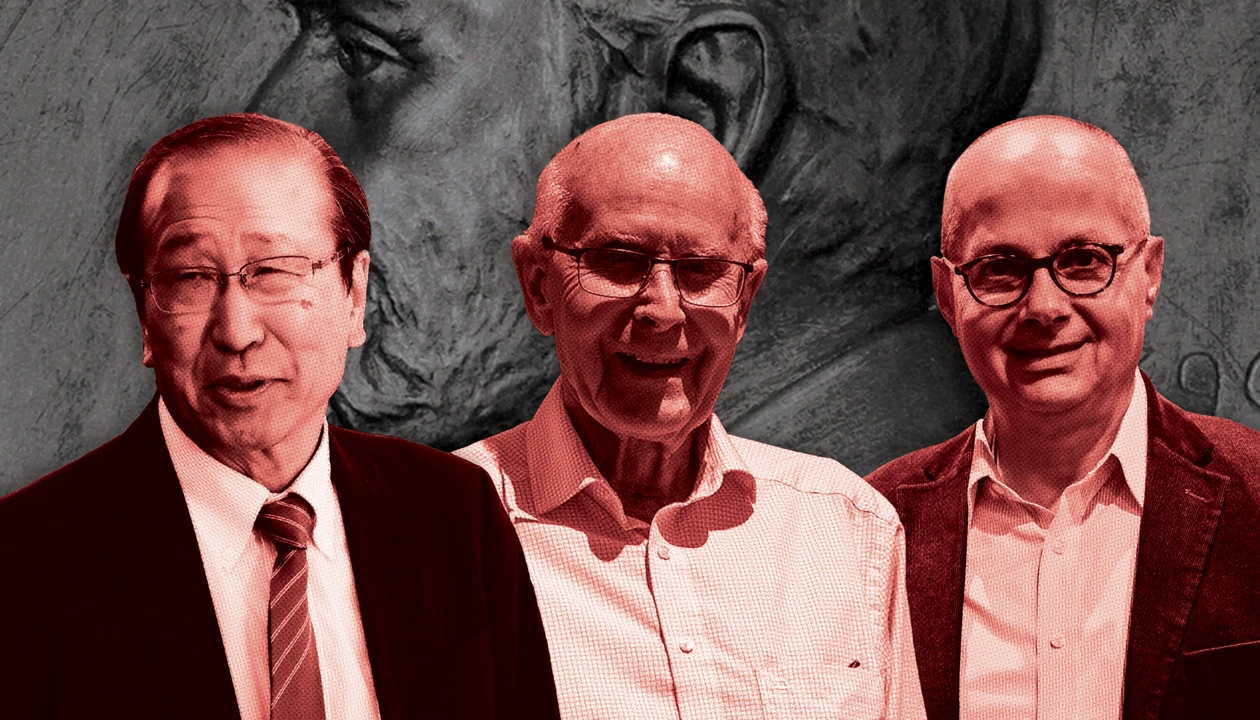This year’s Nobel season has come and gone for C&EN. Last week the newsroom spent an exhilarating 3 days watching brilliant research be recognized, to our delight: on Monday, the discovery of how the immune system is kept in check; on Tuesday, a macroscale demonstration of quantum tunneling; and finally, on Wednesday, the development of metal-organicframeworks (MOFs). Although our US-based reporters don’t log on in the early morning hours with such fervor to see the other prizes awarded, it is always worth following the other announcements.
For example, the Nobel prize in economic science, awarded this week, underlined the importance of funding basic research. Formally called the Sveriges Riksbank Prize in Economic Sciences in Memory of Alfred Nobel, it went to three economists who collectively explained innovation-driven economic growth.
“The laureates’ work remind us that we should not take [economic] progress for granted,” Nobel committee member Kerstin Enflo said during the press briefing. Instead, she pushed society to remember that the factors that the laureates discovered sustain economic growth. “These are science-based innovation, creative destruction, and a society open for change,” Enflo said.
We were reminded that someone needs to fund the fundamentals.
The importance of basic research—that which involves acquiring new knowledge with no clear application—cannot be overstated. The physics laureates didn’t have an application in mind when they first demonstrated macroscopic quantum tunneling on a chip decades ago, but today cellphones rely on the technology. And MOFs are also in their infancy today but hold immense promise for the future.
Historically, the US has been well known for funding basic research. And of the nine new Nobel laureates, six are currently affiliated with US institutions. In 2022 the federal government funded about 40% of basic research in the US, to the tune of about $45 billion. And for the 2025 fiscal year, the federal government budgeted an estimated $45 billion for basic research.
The outlook for funding in 2026 is unclear. The US president’s 2026 budget request to Congress significantly slashed funding for basic research compared with 2025’s budget. Although the House limited the cuts in their proposed spending, the current government shutdown means that the ultimate appropriations remain in limbo.
Physics Nobel laureate John Clarke certainly thinks cutting funding risks the research excellence of the US. At a news conference hosted by the University of California, Berkeley, after his win, Clarke said the funding cuts proposed by the Donald J. Trump administration “will cripple much of the United States’ science research.”
Clarke also expressed concern about how long it would take to restore pool of talent and research infrastructure; after the cuts implemented by the current administration, he said, “it may take a decade to get back to where we were, say, half a year ago.”
A commitment to keeping research well funded does not mean abandoning all accountability for well-managed budgets. But simply cutting is not a sophisticated approach to budget management, particularly if scientists are expected to work in a fast-growing economy.
Next year’s Nobel prize winners will likely have delivered their prizeworthy work many years ago. Good research takes time. But without funding for research, the amount of high-impact research being performed could wither. What is at stake is more than just prizewinning kudos—it is scientific prowess and societal progress.
This editorial is the result of collective deliberation in C&EN. For this week’s editorial, the lead contributors are Fionna Samuels and Laura Howes.
Views expressed are not necessarily those of ACS.
Chemical & Engineering News
ISSN 0009-2347
Copyright ©
2025 American Chemical Society

